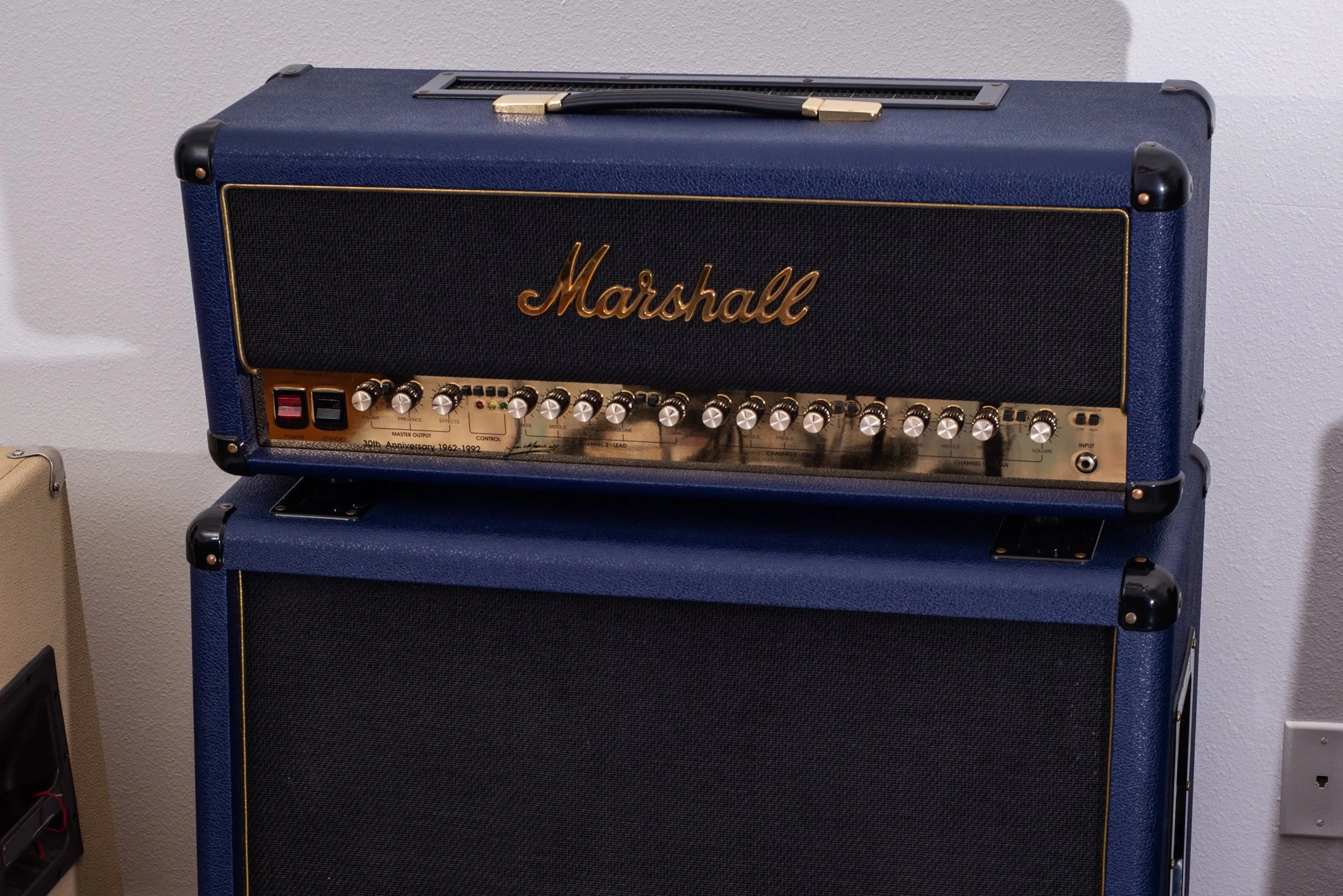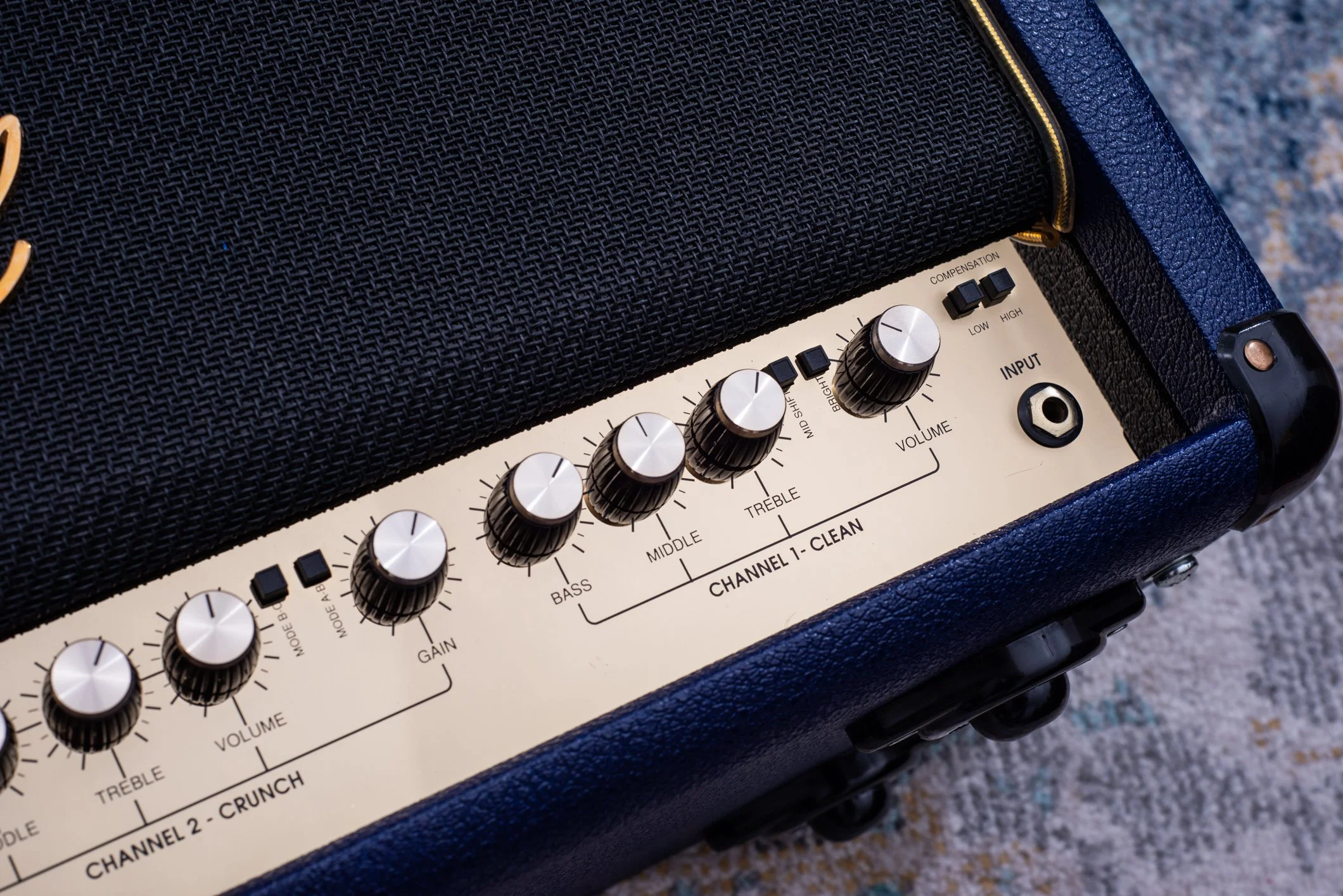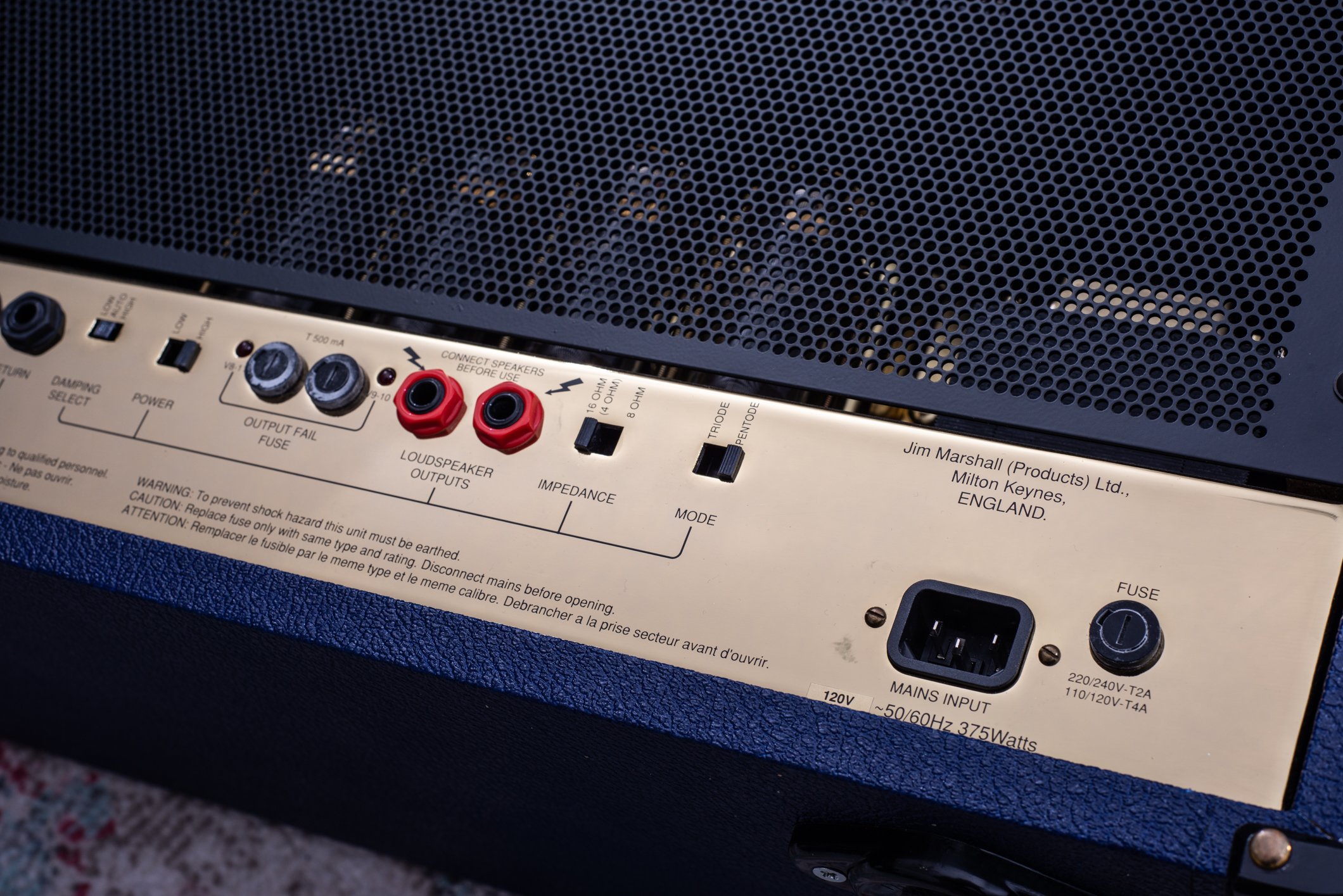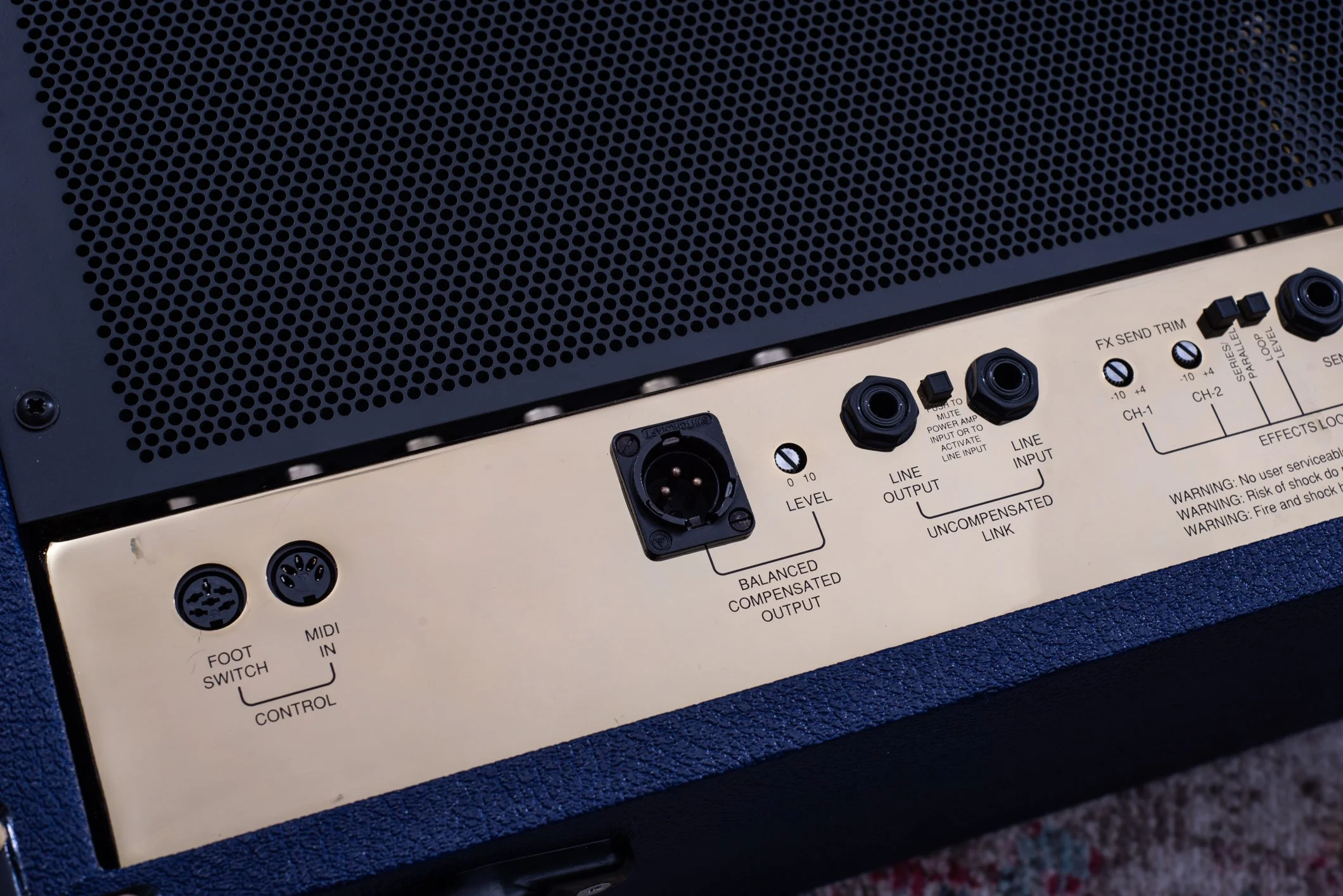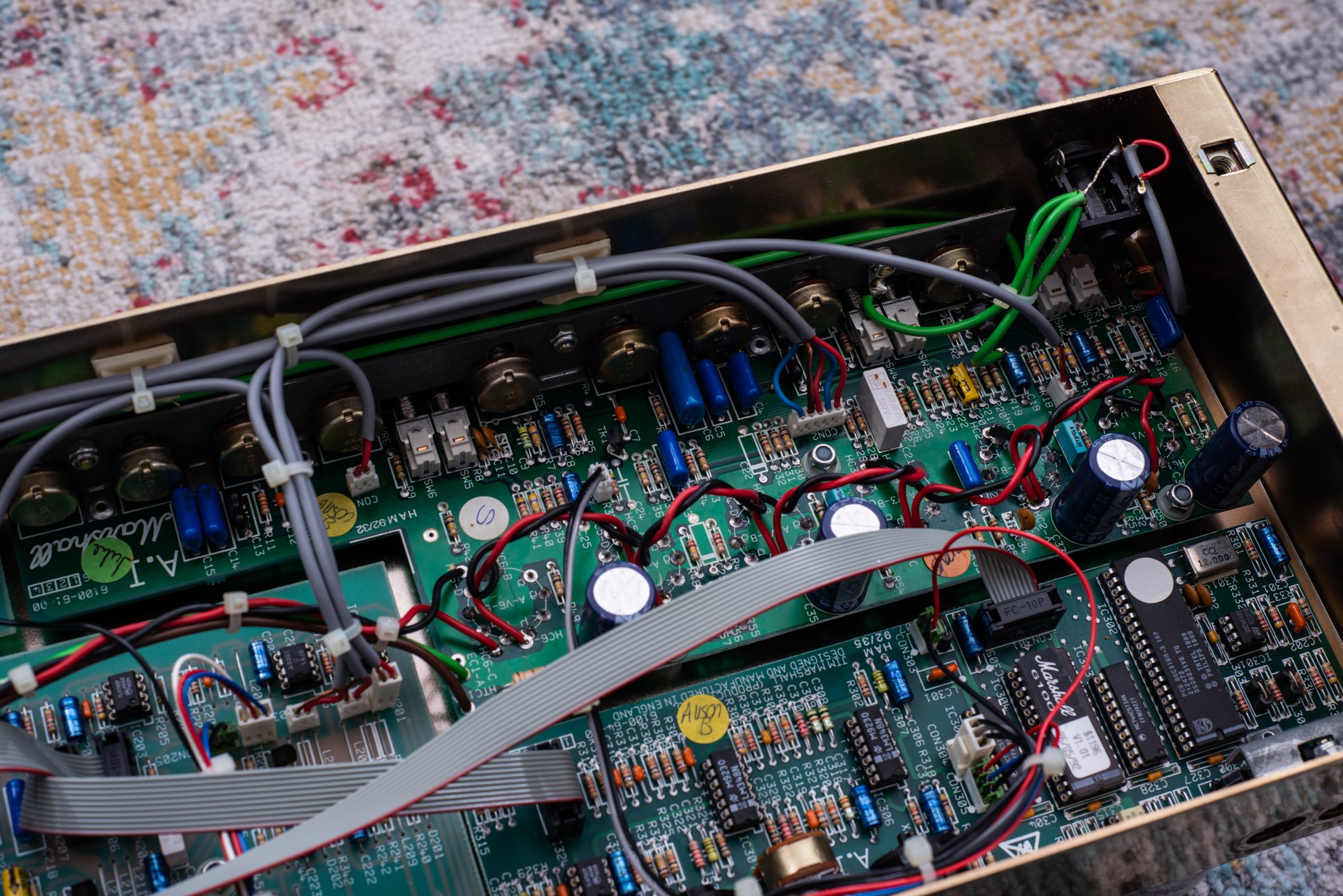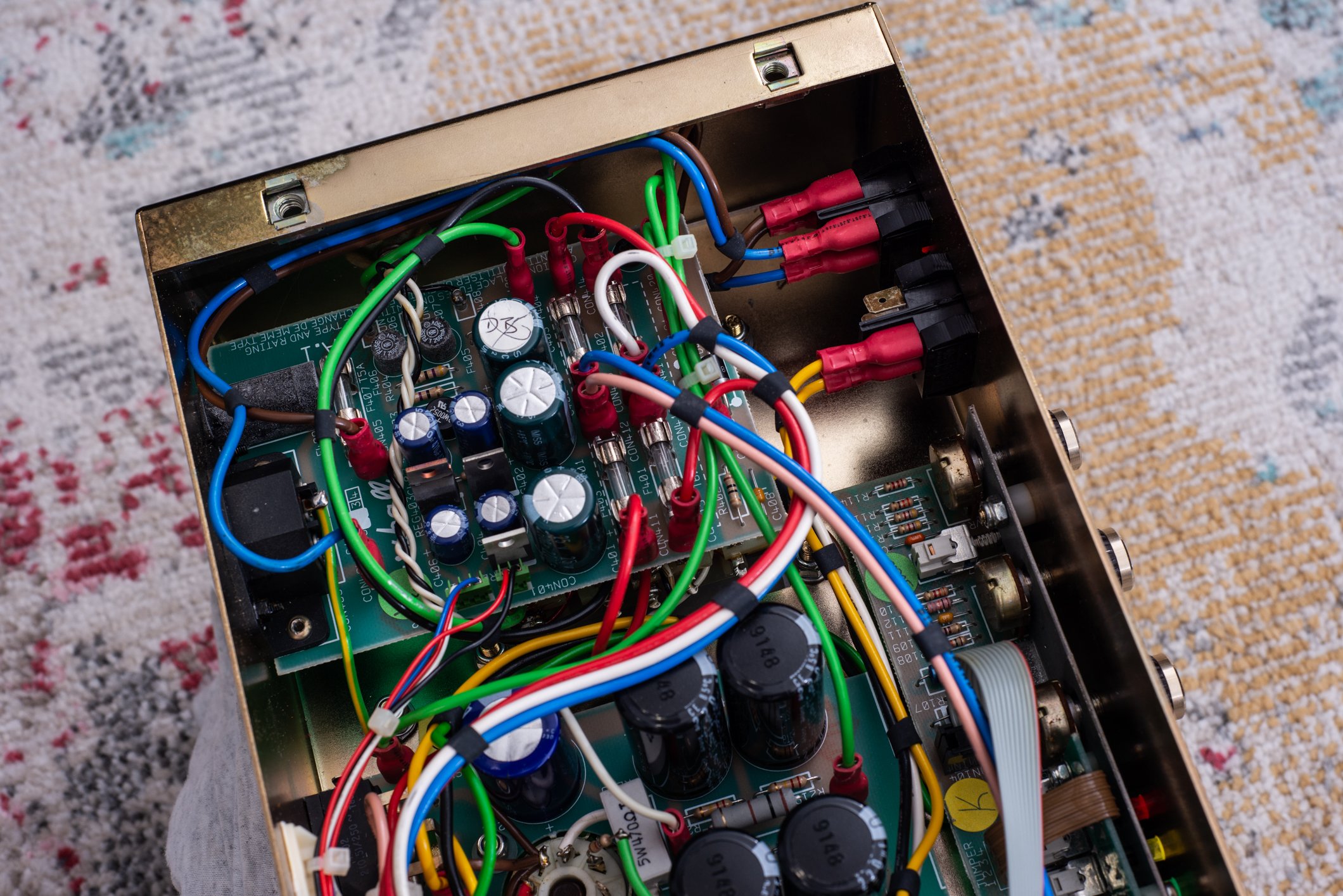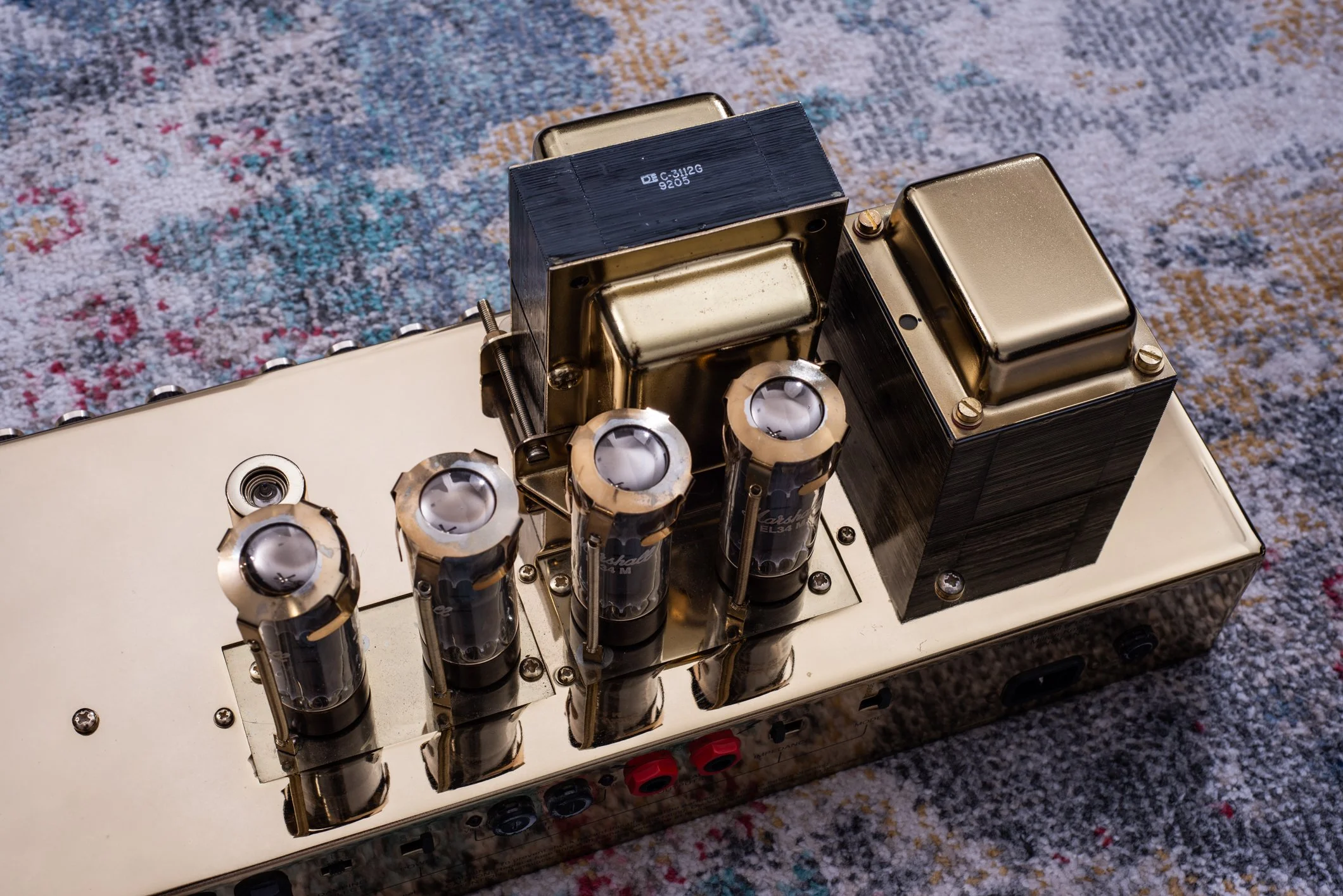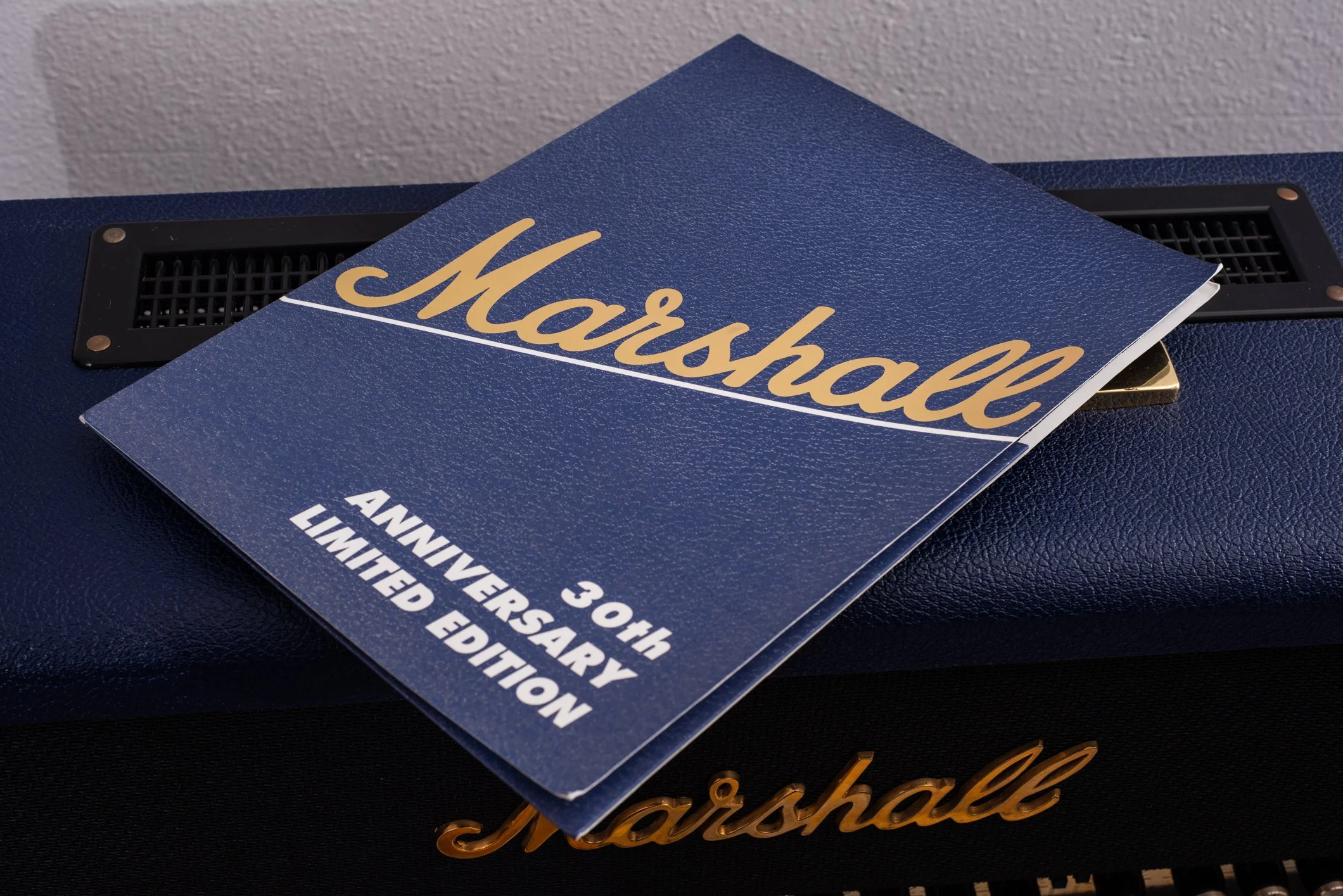1992 Marshall 6100 Limited Edition
Specs
3 Channels
100w Output
4x EL34 Power Tubes
7x 12AX7 Preamp tubes
Overview
Finally got my hands on this beautiful piece - a mint condition 1992 Marshall 6100 and the matching cabinet. These special amps were limited to 800 heads and 500 combos worldwide, and the story goes that they sold out within minutes.
These amps were originally designed as another model in the JCM900 series, following the 2100 (single channel), 4100 (two channels) and then 6100 (3 channels). Instead, is was separated from the 900 series into its own unique model, although some of the 900 DNA is clearly still present. The 6960LE Cabinet is equipped with UK-made Celestion G12T-75 speakers. These special edition amps came with polished brass front panels, logos, and even the internal chassis, transformers, and tube covers! They also came with a signed certificate of authenticity and manual in a special blue folder.
It has one of the best clean channels of any Marshall amp, with a tone stack positioned prior to the gain stages a la Fender, plus a switchable mid shift and bright for more versatility. Channel 2 is a real highlight, and has aged very well even compared to more modern channel switchers. This channel has two switches, which can be combined to use “Modes” A, B, or C. Basically, each mode is supposed to replicate a classic Marshall sound, with a tweak to both the amount of gain and voicing, although it won’t be a substitute for the real models. Mode A is a JTM45, Mode B is a 1959 Super Lead, and Mode C is a JCM900, although the manual does not specify which 900 model - either way, it has a lot of gain, and it’s all tube (no diodes) so more of a precursor to the SL-X than anything made at the time of this amp’s introduction (The SL-X came out one year later in 1993).
Channel 3 is the lead channel, which fits somewhere in between Mode B and Mode C, with a substantial bass boost, especially noticeable on a Marshall. This channel also has a switchable gain boost and EQ contour, which is very usable - a scooped feel, but not so extreme that you get lost in a mix (depending on your treble/middle/bass settings). It can start to get a little flubby in the low end with the gain turned up too high, so I find it’s best to keep it a little over halfway and for more saturation, use a boost if required - or just use Mode C on channel 2 for metal rhythms. Later 6100’s introduced the “LM",” or “Lead Mod” which adds a lot more gain as well as some more aggressive shaping for more modern tones on this channel. Some 6100LM’s were modded back to this original 6100 spec, while some 6100’s were modded to the LM spec - best to check internally for that. Both amps I own are unmodified. I enjoy the 6100LM Lead mode, especially for high gain chugging and 80s metal rhythms, but the standard 6100 lead channel does have its own appeal, especially for more bouncy, thicker, solos and fills.
It’s a feature heavy amp as well, with MIDI channel switching, an effects loop with a front panel mix control, as well as an overall master volume (affects all 3 channels, very useful) and master presence. There is also a “high” and “low” compensation mode at the input for use with single coils or humbuckers, and these have a slight effect on the tone, but I usually leave them both off - same for the low volume compensation, which adds a little extra thickness and reduces treble to mimick a little more power section saturation but at lower volumes (note that the power section is not being driven at low volumes, it’s just a slight EQ adjustment).
On the rear panel, the amp can be switched to either Pentode or Triode power tube operation, a high and low power mode, as well as a speaker damping control (low, auto, or high). Rounding out the end of the features is an XLR line out and 1/4” line input/output jacks.
